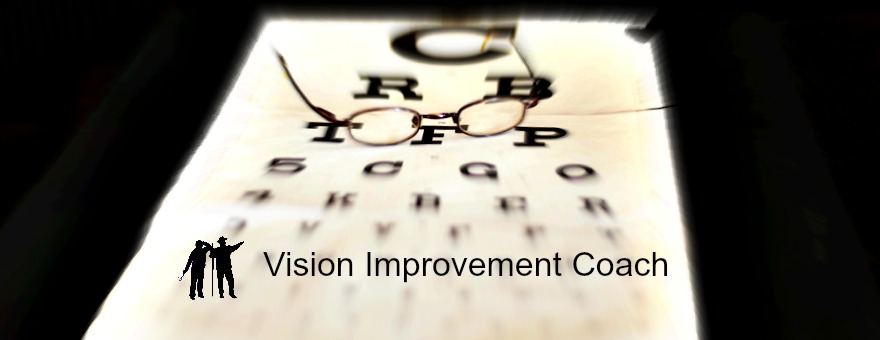Pointing the Way to Better Eyesight
Central Fixation:
Seeing Best Where You Are Looking
Central Fixation is defined by Dr. Bates and the Bates Method as seeing best where you are looking. Take a moment to reflect upon your visual experience of the world and the above statement.
Do you in fact see best where you are looking? Or do you see equally well, or better, where you are not looking?
When our eyesight is normal, or "perfect", the illusion of seeing best where we are looking can always be demonstrated.
When we are strained in our minds and our eyes, central fixation is lost to greater or lesser degrees. Restoring our eyesight to it's natural clarity once again is a process of regaining proper use of the center of sight.
Look up and away. Breathe. Blink. Then come back!
One Small Spot

"One part of an object is seen best only when the mind is content to see the greater part of it indistinctly, and as the degree of relaxation increases, the area of the part seen worse increases, until that seen best becomes merely a point." Dr. Bates
If you imagine looking out at the world, it’s a rather large picture that we see in our minds.
However, there is only one small spot in that large field of vision that is distinctly clear. There is only one small spot that picks up details and sees with 20/20 or better.
The majority of our field of vision is peripheral and detects movement and basic forms and shapes. Within that large field of vision there is only one small spot in the very center that sees with distinct clarity.
An attempt to try to see something in the periphery with distinct clarity becomes a strain. When an eye with normal vision looks out into the world, it only sees one small spot with distinct clarity and everything else is less clear. The periphery is not experienced as being blurry, but less clear and less distinct.
"The fact is that the nearer the point of maximum vision approaches a mathematical point, which has no area, the better the sight." Dr. Bates
Eyes and Mind at Rest
When one possesses central fixation, the eyes and mind are at rest. When the eyes and mind are at rest-- they see clearly!
This means that when we see clearly, there is a large part of our field of vision that is rather unclear and indistinct. The peripheral field that is less clear and less distinct, I want to reiterate, detects movement.
Central Fixation Puts Movement in its Place!
If you remember from the swinging page, detecting movement and allowing movement to be a key feature of our visual experience is one of the foundations of the Bates Method and improving eyesight.
So, I want to make sure that you understand that the process of regaining clear eyesight does not exclude periphery! It includes peripheral awareness and it puts it in its function of detecting movement. If you were to practice swinging an object, say a letter on an eye chart, you will notice the swing of that letter when you are able to see one part of that letter best.
In other words, if you can look at the letter r and see the right hand side of that letter r clearer than the left hand side, and then shift your attention to the left hand side and see the left hand side clearer than the right hand side, you will be able to notice the swinging, or illusion, of the letter moving back and forth. These two principles, movement and seeing best where you are looking, go together. They go hand in hand!
When you obtain central fixation of the eyes and mind, not only is your central vision, where you see clearly and distinctly, improved, but your peripheral experience will also be improved. You will be able to notice the apparent movements of stationary objects of the world and the illusion of swinging will be easily noticed.
Return to the top of Central Fixation
Back to the Bates Method